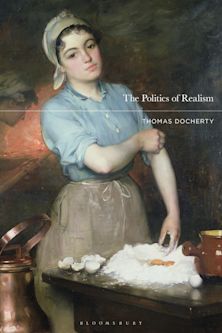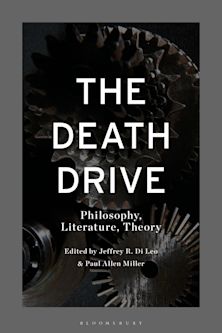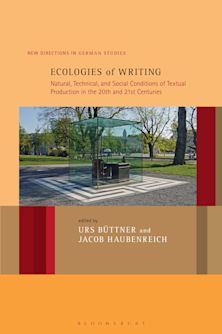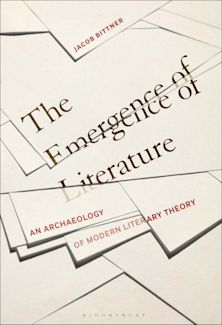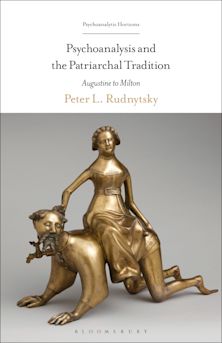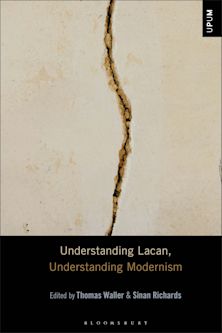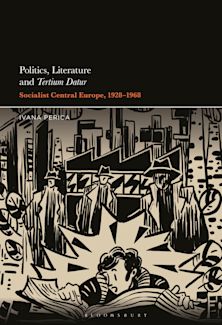- Home
- ACADEMIC
- Literary Studies
- Literary Theory
- Redemptive Hybridism in Post-Postmodern Writing
You must sign in to add this item to your wishlist. Please sign in or create an account
Description
From Virginia Woolf to David Foster Wallace and beyond, 'redemptive hybridism' – a new way of reading texts full of possibility and genre blending – emerges as a key trajectory for post-postmodernity.
Tasha Haines investigates what she calls 'redemptive hybridism' a tendency in post-postmodern writing characterized by possibility. She suggests that near the 21st century, postmodern élitisme gives way to a reparative blending of high-low forms and genre collaborations for challenging and extending the relationship between writer, written material, and reader.
By combining an innovative literary investigation with creative and auto-theoretical strategies, Haines offers valuable new interpretations for texts of 'the modernisms continuum'. Her conversational survey moves among the hybridity of Virginia Woolf, the paratextuality of David Foster Wallace, with Nathalie Sarraute, Édouard Levé, Maggie Nelson and more. In reference to Deleuze and Guattari, Hassan, and others, writers are curated for their approach to form, method, and content, evoking and invoking textual hybridity.
Haines articulates a new way of viewing works via comparisons and close-ups that exemplify the possibility and genre-blending that is Redemptive Hybridism in Post-Postmodern Writing.
Table of Contents
Introduction: The Enemy Within
Taking Enemies In
This Multivariant Plot
The Vitality of Difference
A Lineage of Wariness and Influence
The Terrible Postmodern Party
Part I: Features of Redemptive Hybridism
1. The Redemptive Textual Body
Etymologies
Umbilical Connection, Author to Text
The Word Made Flesh
2. The Hybrid Middle
Pushing out towards Ends
Sarraute as Middle
Parataxis and the Middle
Time and Unfinishedness
3. Family Traits of Fragmentation
The Fragmented Mind
Constraint, Minimalism, and the Caveat
Vestibule and Fringe
Ethics, Alterity, and the Reader
The Ethical, The Moral, and the Difference
High, Low, High Low, It's Off to Blend We Go
Part II: Figures of Redemptive Hybridism
4. Woolf's Atom; The Image of Hybridity
Begin with the Atom, Virginia Woolf
Saturation in Woolf and Wallace
Mrs. Dalloway as Fertile Ground
Inter-genre Woolf
It Ends Where It Begins, with the Atom
5. Finding a Name for Possibility
Postmodernism, Feminism, and Agency
Finding Names and Building Frames
Call Me[a]taxy: Some Recent Pre-fixes
6. The Pale King's Constellation; Factoids, Ghosts, and Boredom
Tell the Truth, David Foster Wallace
Everyday Ghosts, Souls, & Phantoms
Ambiguity & Contradiction in The Pale King
Boredom: Between Crisis & Epiphany
A Conclusion, of Sorts; This Is Not the End
References
Index
Product details

| Published | 14 Dec 2023 |
|---|---|
| Format | Ebook (PDF) |
| Edition | 1st |
| Extent | 168 |
| ISBN | 9781501394522 |
| Imprint | Bloomsbury Academic |
| Publisher | Bloomsbury Publishing |
About the contributors
Reviews
-
With humility, skill, and ingenuity, Tasha Haines co-mingles philosophy, theory, and artistic autobiography to approach some of the most complex texts in the modernisms continuum. In Redemptive Hybridism, the hybrid, creative theories of Deleuze and Guattari, Hassan, Lyotard, Eagleton, Bakhtin, and others, flow through Virginia Woolf's atomic saturation, David Foster Wallace's unfinishedness, and Maggie Nelson's fragments. Haines' marriage of form and content is unusually lucid. It is a rare delight to accept Haines' invitation “to engage spaces of possibility in recognition of the fact that nothing ever really dies it simply crosses over, hybridly, redemptively.
Marcela Sulak, Professor of English Literature and Linguistics, Bar-Ilan University, Israel
-
A playful, probing text that not only forges new pathways for considering two major figures of the 20th century, but also provocatively invites the reader to reflect on their own role in the process. Reversing and disrupting received wisdom, Haines assembles a ludic and agile critical apparatus that is both critically rigorous and enormously enjoyable to read.
Clare Hayes-Brady, Associate Professor of American Literature, University College Dublin, Ireland
-
'To be “post” is to hold onto the past while transforming it,' Tasha Haines writes in her introduction. Firmly situating this study in the 21st century, hybridization emerges as a recuperative, exploratory act. Only with the un-mooring that comes with such risk, Haines argues, is real discovery-a re-envisioning of the terrain artists and theorists have covered and recovered-possible.
Jacqueline Kolosov, Professor of Creative Writing, Texas Tech University, USA
-
A discursively daring exploration of the conditions of redemption, sincerity, and literary camaraderie as located both in texts and at the seat of reader engagement.
Linda Ceriello, Part-Time Assistant Professor of Religious Studies, Kennesaw State University, USA

ONLINE RESOURCES
Bloomsbury Collections
This book is available on Bloomsbury Collections where your library has access.












